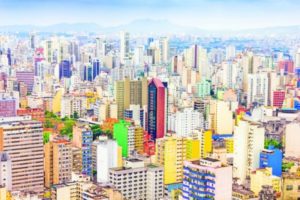
In 1993 Itamar Franco became the 34th President of Brazil, taking the helm in a country suffering from hyperinflation of 2,400 per cent and accepting the challenge of fixing an economy where his predecessors had failed.
The 32nd president, José Sarney, had made price rises illegal, but failed to control government spending, while the 33rd, Fernando Collor de Mello, had stopped printing money and frozen citizens’ assets, but was currently impeached on charges of corruption. Into this gloomy situation stepped a quartet of academics who had a plan, the Plano Real.
In the UK, hyperinflation is something that happens to other people – those in the past or those in other countries. As a consequence, we tend to give little thought to its practicalities and the difficulty of breaking the trend. In a situation where prices rise every day, it is difficult to understand how retailers determine the price of goods, how individuals behave when their pay check loses value every day they do not spend it and how to convince an entire nation that the problem is solved?
In Brazil, hyperinflation was a way of life, generating a mass psychological inertia to economic improvement. Each morning, merchants would get together in small groups all over the country and debate what today’s price rise was going to be, before agreeing a fixed increase between themselves. These debates took into account rumours about similar industries in neighbouring cities, the increased cost of living caused by retailers in other industries and speculation about government efficacy. In supermarkets, staff were employed almost continually to put new labels on goods reflecting the day’s new prices. Many older Brazilians recall shopping swiftly enough to stay a few aisles ahead of the store clerk and his price-label machine in order to get the goods at the old price.
The problem originated in the 1950s when the government increased the creation of money to fund the building of the new capital Brasilia. Since then, in addition to multiple presidents, the country has gone through five different currencies: Cruzeiro (BRZ), Second Cruzeiro (BRB), Cruzado (BRC), Third Cruzeiro (BRE) and the new Cruzeiro Real (BRR). Each currency brought with it the promise of price stability and each currency failed to deliver.
In 1993, when Edmar Basha and the other academics from the Catholic University in Rio proposed yet another currency to break the cycle, it is not surprising that they were met with scepticism. This time however, there was a key difference – the new currency would not exist.

The following year their ‘Plano Real’ was put into action. All of sudden, Brazilians found their store prices quoted in a currency that they could not touch: the Unidade Real de Valor (the Unit of Real Value or URV). However, when they withdrew money or paid for goods, they still had to do so in Cruzeiro Real. So, for example, one week the price of milk was 1 URV and the storekeeper told them the exchange rate was 1 URV to 8 Cruzeiros. The next week, milk was still 1 URV, but due to hyperinflation, the exchange rate was now 1 URV to 16 Cruzeiros. The result of this was to change the mind-set of an entire country. Now everyone believed that the URV had a static value, whilst simultaneously believing that hyperinflation was still rampant.
At the same time as introducing the URV, the government slowed down the creation of money and took steps to balance the budget. In addition, they printed an entirely new currency: the Brazilian Real (BRL) and stored it ready for the ‘Plano Real’ to reach its conclusion.
After six months of the URV, Brazil was ready for the final stage of the ‘Plano Real’. On 1 July 1994, the Cruzeiro was retired and replaced entirely with the Brazilian Real at an exchange rate of 1 Real to 2,750 Cruzeiros. The authors of the ‘Plano Real’ promised live on TV that hyperinflation was over and then watched nervously to see if they were correct.
Twenty years on and the Real is still the official currency of Brazil and hyperinflation is no more thanks to the sensible management of public finances and a risky, expensive, trick played on an entire nation.
The power of government to change economic perceptions and by doing so, also change economic reality has never been better demonstrated. Today’s national and international regulatory bodies could use some of that same magic touch.